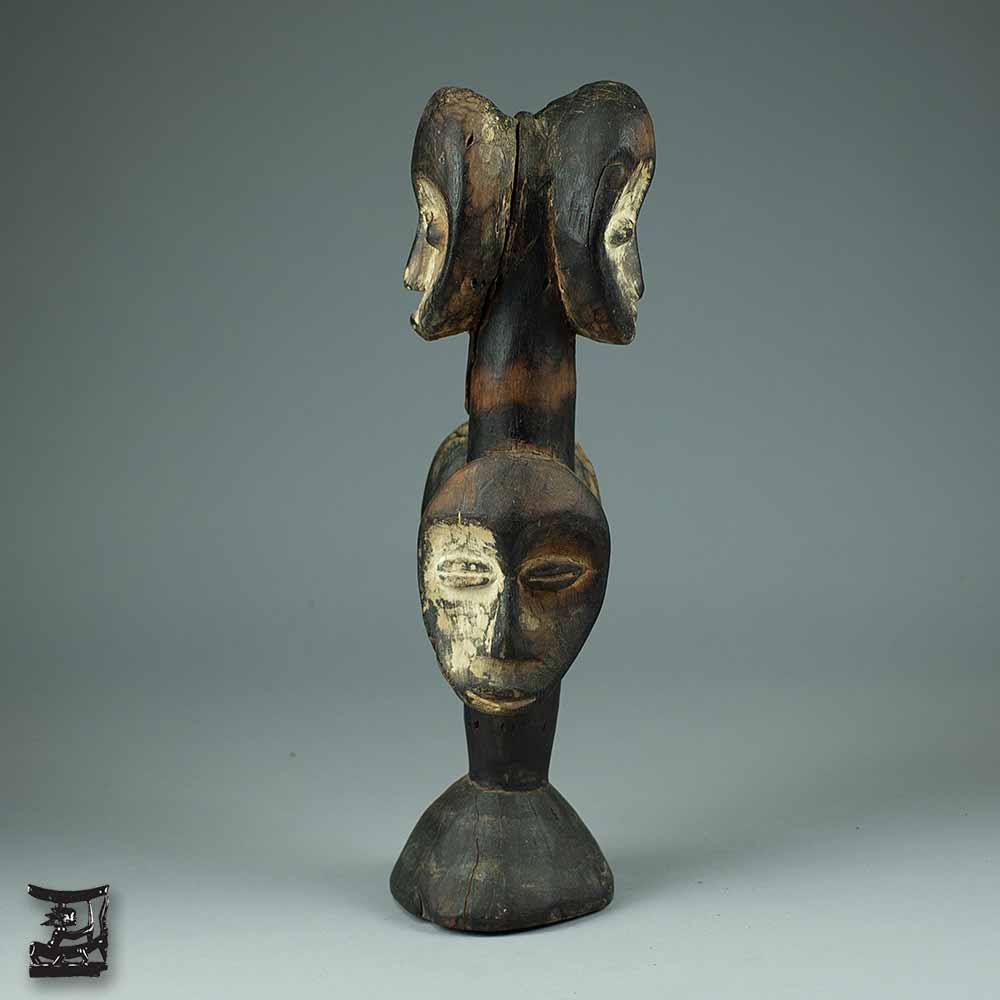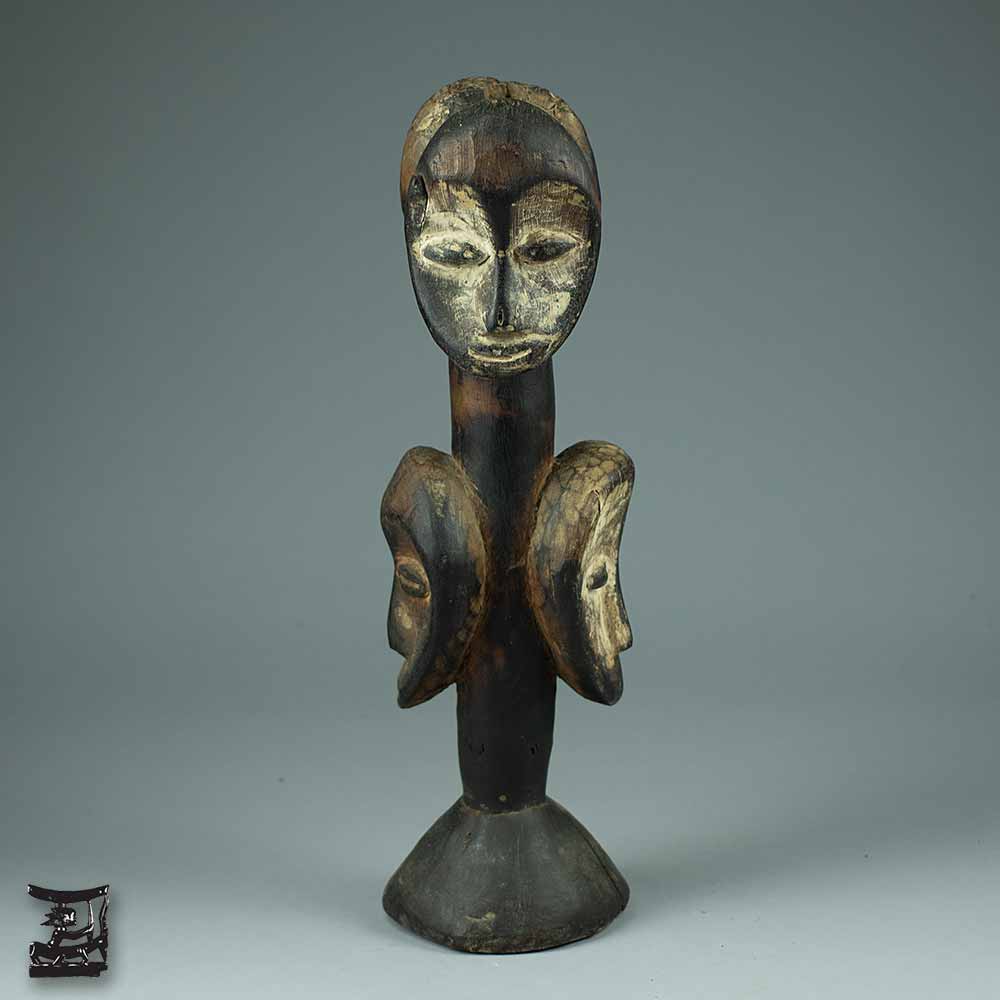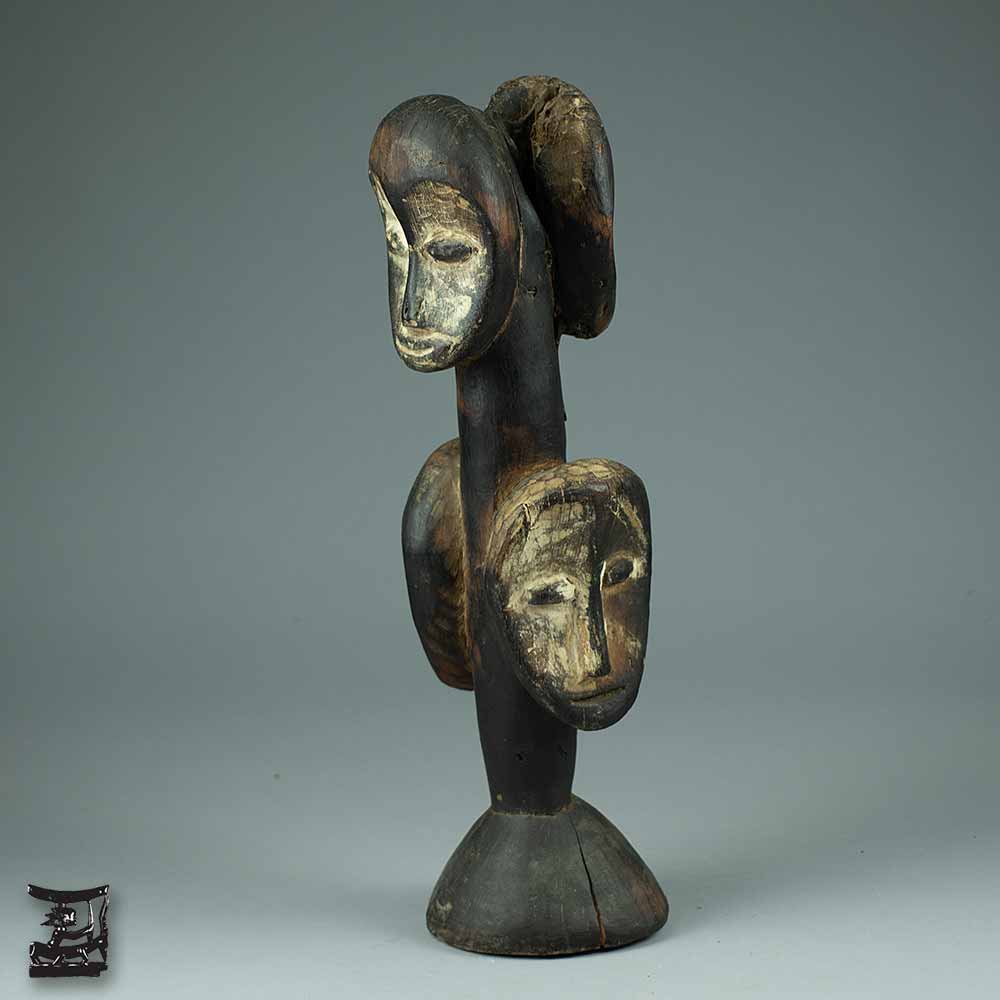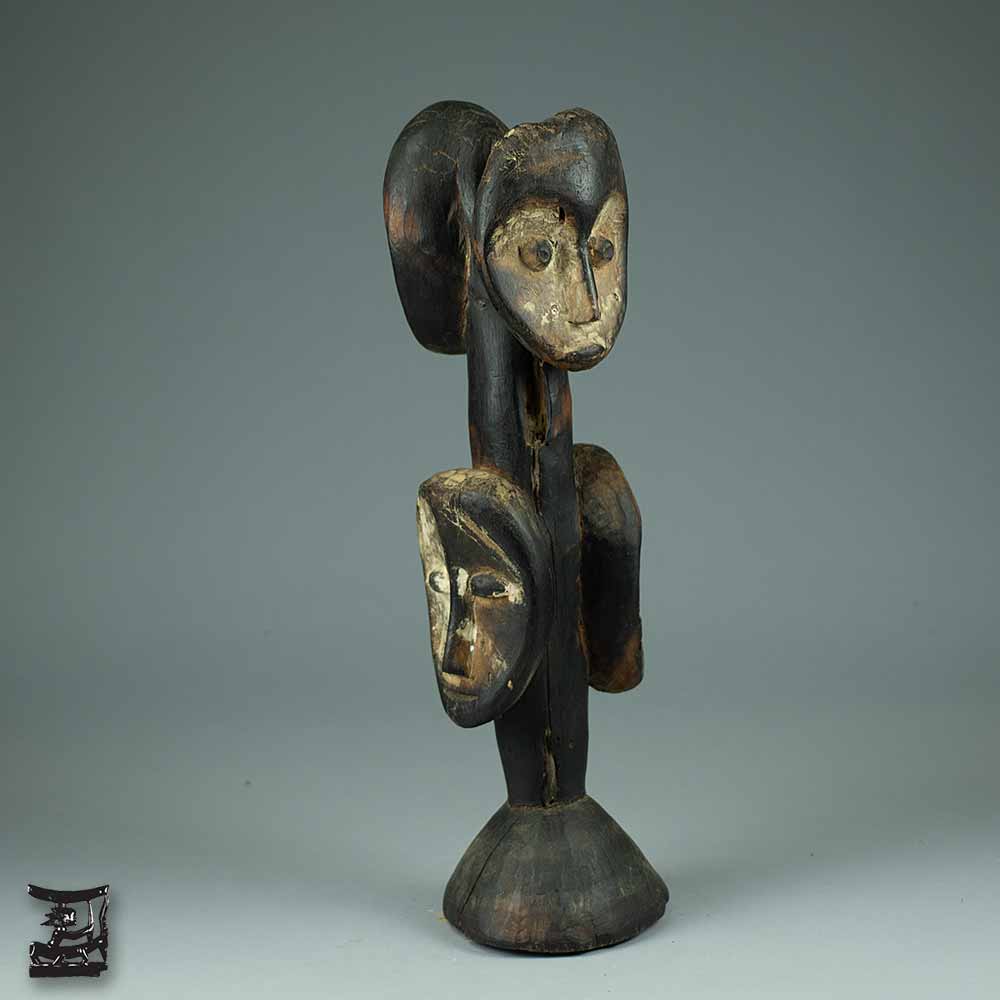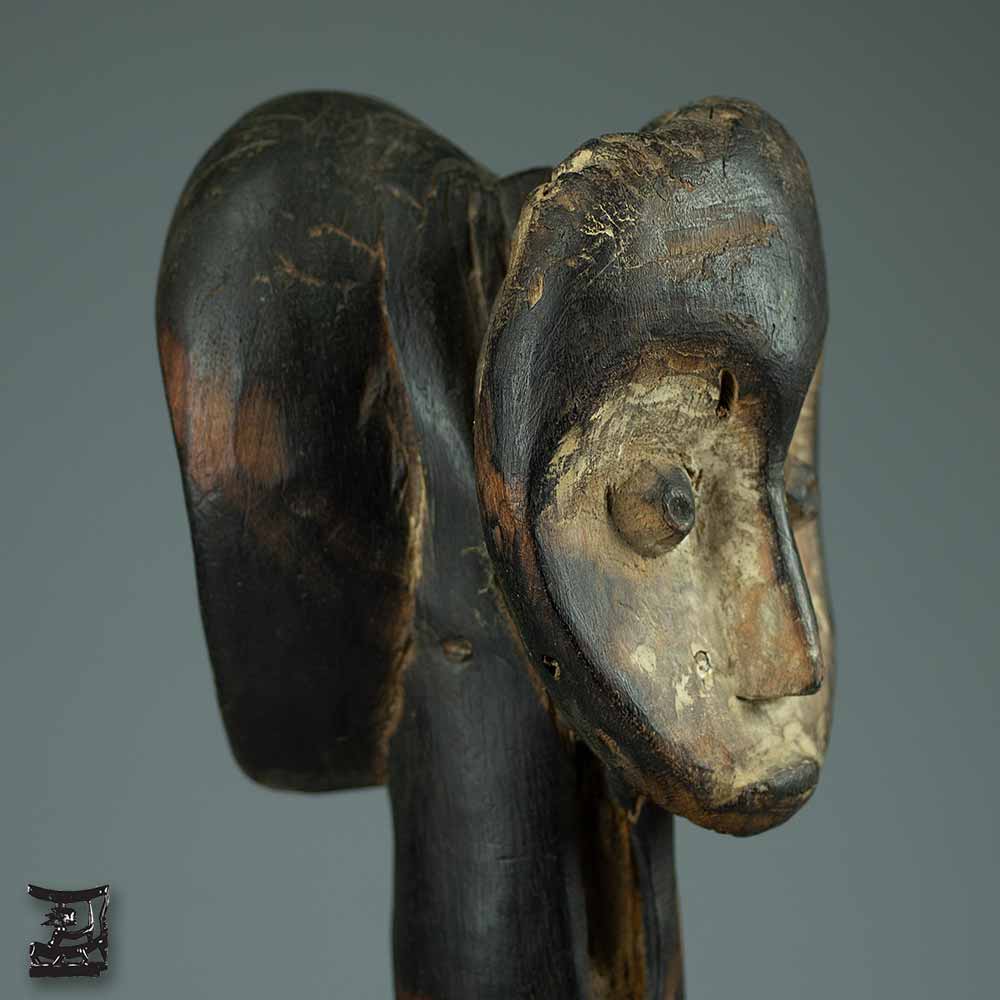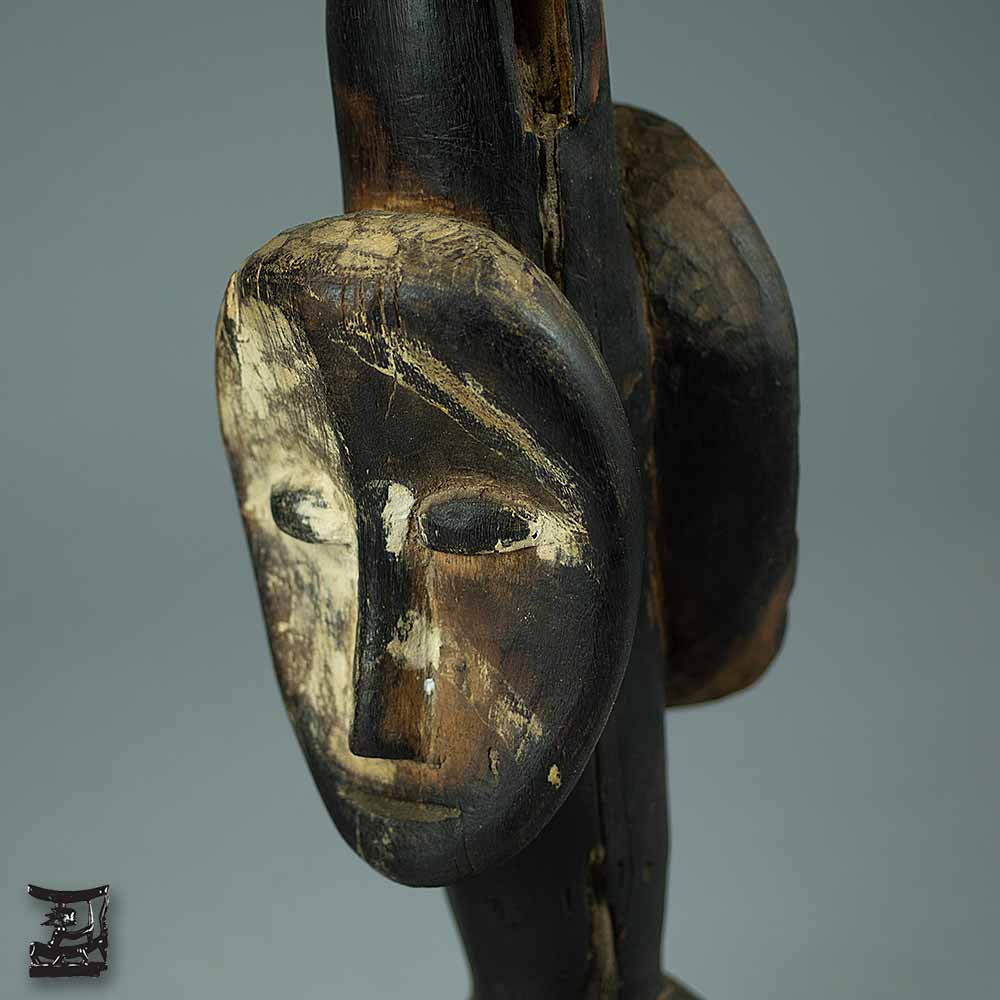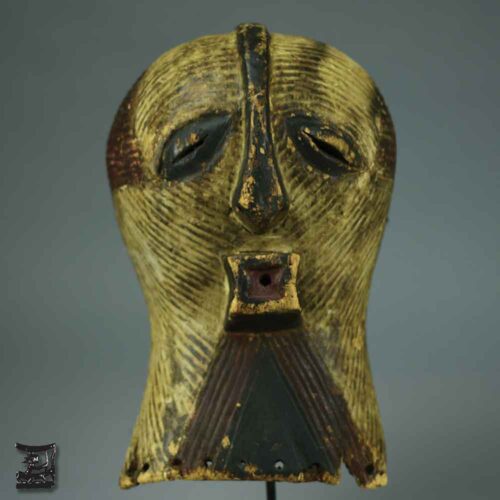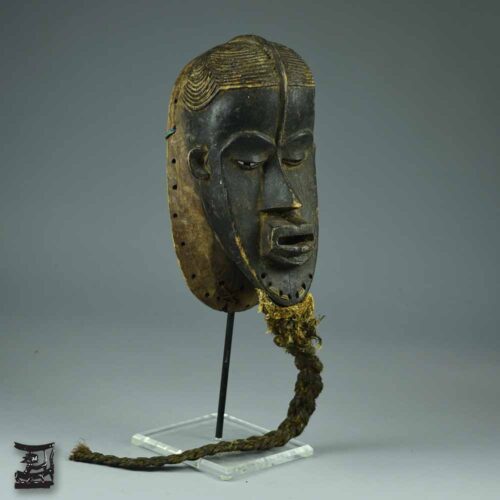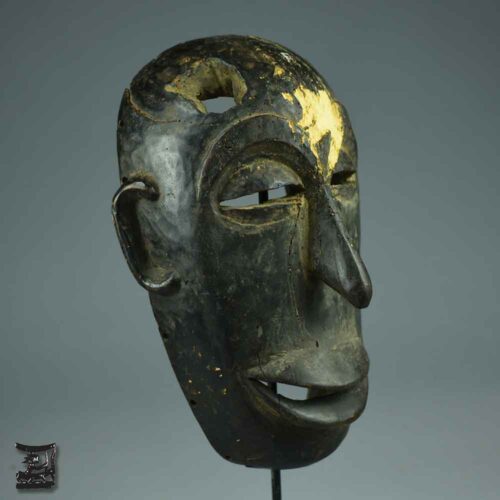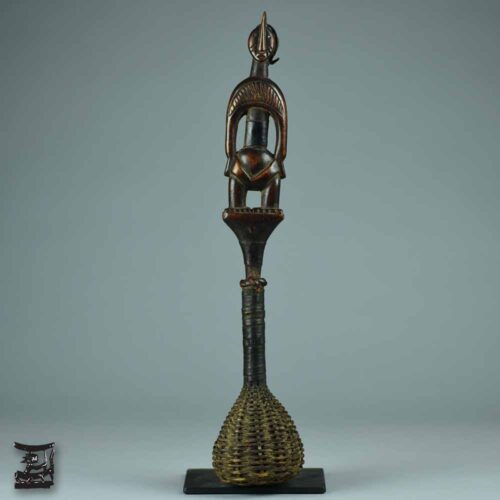Superb Lega Multiheaded Figure
$1,395.00
In stock
In stock
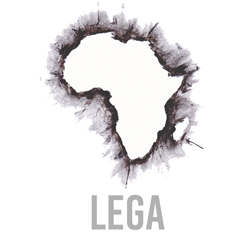
ITEM #:
55032
ETHNICITY:
Lega
ORIGIN:
Democratic Republic of Congo
LEGA SAKIMATWEMATWE FIGURE:
This multiheaded figure known as Sakimatwematwe (Many-Heads), a striking part of the Jean-Pierre Hallet collection.
Details

ITEM NAME:
Lega Multiheaded Figure
ITEM #:
55032
ETHNICITY:
Lega
ORIGIN:
Democratic Republic of Congo
MEDIUM:
Wood, Pigment
DIMENSIONS:
21″ (53.3 cm) Tall.
CONDITION:
Good.

PROVENANCE:
Jean-Pierre Hallet Estate Collection – California, USA.

CATALOGUE NOTE:
In the rich tapestry of African art, objects are not mere sculptures; they embody layers of symbolism and cultural values. One striking example comes from the prestigious Lega Bwami society, where initiation figures speak volumes. Imagine one such artifact—a Lega multiheaded figure known as Sakimatwematwe (Many-Heads), a striking part of the Jean-Pierre Hallet collection. The Lega artisans skillfully vary the number of heads, with some figures bearing two and others a dozen, emphasizing the figure’s symbolic uniformity despite physical diversity.
This enigmatic piece is more than an artistic expression—it is a vessel of wisdom. It carries the aphorism: “Many-Heads who has seen an elephant on the other side of the river.” With this, the Lega encapsulate the virtue of collective insight and action—a solitary hunter spotting the elephant represents opportunity, but it is through the communal effort that success is achieved. The absence of gender on these figures hints at an egalitarian aspect of Bwami, transcending traditional gender roles for the greater societal achievement.
For esteemed African Art Collectors, the Sakimatwematwe is not only a testament to the Lega’s craftsmanship but a beacon of cultural ideology, depicting the interconnectedness of Bwami society. In Bwami, progress is a dance of solidarity; it celebrates relationships—the partnership between husband and wife, the mentorship between sponsor and initiate.
Occasionally, you may encounter a many-headed figure with a single arm—this serves not only as an aesthetic choice but also as a poignant warning. It illustrates that even the mightiest member of Bwami is not immune to downfall, a sobering reminder of the tenuous nature of status.
When considering the multiheaded figure within the context of the Hallet collection, one appreciates the link between art and the deeper societal constructs that it mirrors. Pieces like this invite us to ponder on the intricate web of community, shared wisdom, and the virtues that guide a society, making them not mere objects of beauty but narrators of the human experience.
As far as it is known, Jean-Pierre Hallet is the only white man to have ever been inducted into the Lega Bwami society.

